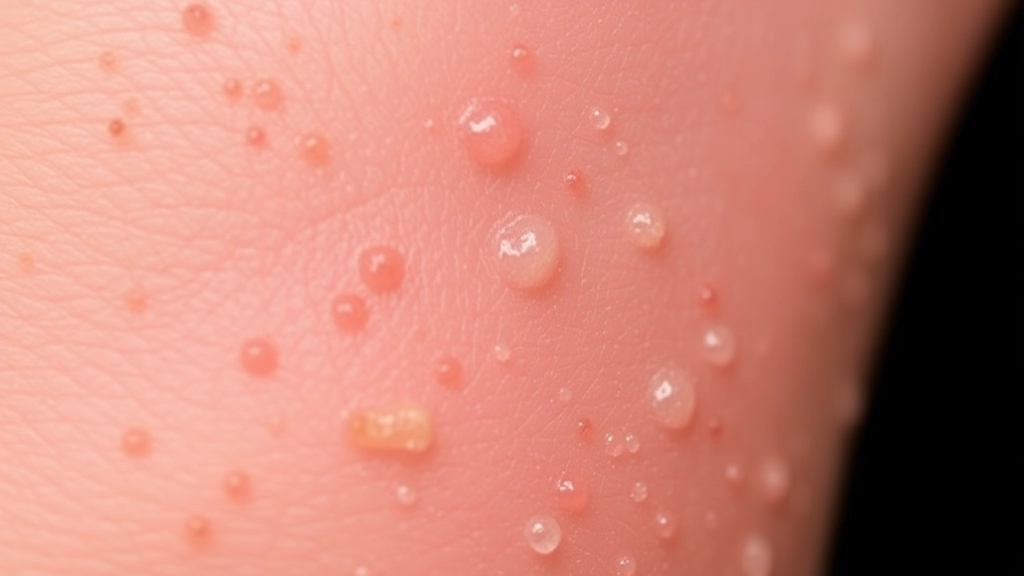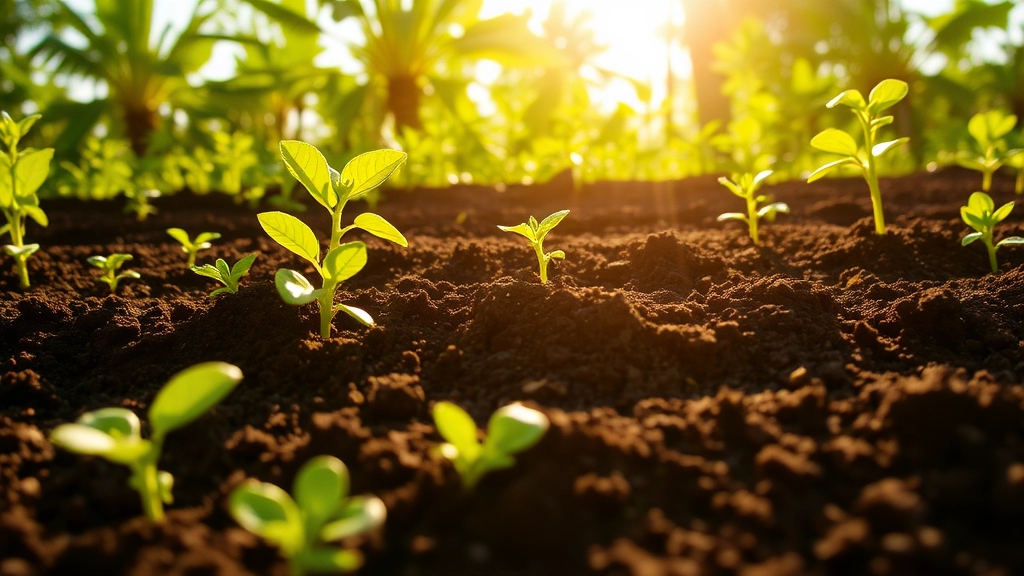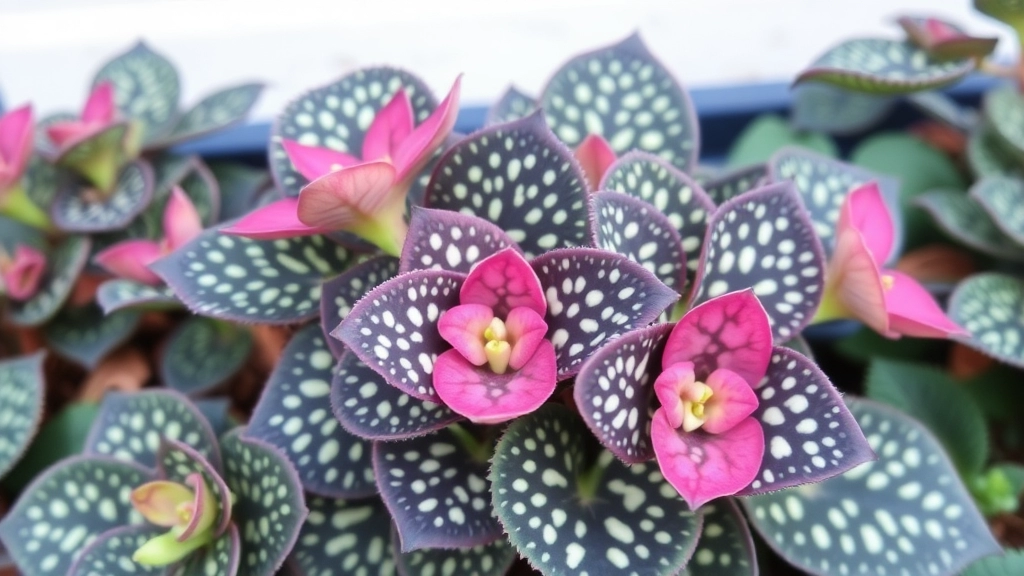Hey there, fellow plant enthusiasts!
If you’ve ever noticed Kalanchoe black spots on your beloved succulent, you’re not alone. These pesky spots can be a sign of various issues, from overwatering to fungal infections. But don’t worry, I’ve got you covered with some practical tips to identify and tackle the problem head-on.
Identifying the Root Cause
First things first, let’s figure out the root cause of those Kalanchoe black spots. Check your watering habits, as too much moisture can lead to root rot and black spots. Also, inspect your plant for any signs of pests or fungal growth. By addressing these issues early, you can keep your Kalanchoe thriving and spot-free.
### Common Causes of Black Spots on Kalanchoe
Have you noticed unsightly black spots appearing on your Kalanchoe? You’re not alone in your concern. Many plant enthusiasts encounter this issue, and understanding the common causes can help you address it effectively.
Black spots on Kalanchoe can stem from various factors, primarily linked to environmental conditions, pests, and diseases. Here’s a breakdown of the most frequent culprits:
– **Fungal Infections**: These are often the leading cause of black spots. Excess moisture and poor air circulation create a breeding ground for fungi, which can damage your plant.
– **Pest Infestations**: Insects like mealybugs and aphids can cause stress to your Kalanchoe, leading to blackened areas on the leaves. Their feeding habits weaken the plant, making it more susceptible to other issues.
– **Environmental Stress**: Sudden changes in temperature, humidity, or light can shock your plant. This stress can manifest as black spots, signalling that your Kalanchoe is struggling to adapt.
– **Watering Issues**: Overwatering or underwatering can lead to root rot, which may cause black spots on the leaves. It’s essential to find a balance to keep your plant healthy.
For more detailed information on how to manage these issues, check out our [post-flowering care tips for Kalanchoe](https://planthq.org/postflowering-care-tips-for-kalanchoe/) and our [guide to caring for Kalanchoe house plants in the UK](https://planthq.org/guide-to-caring-for-kalanchoe-house-plants-in-the-uk/).
Identifying Fungal Infections

Have you noticed some unsightly black spots on your Kalanchoe?
It could be a sign of a fungal infection, which is more common than you might think.
Fungal infections can sneak up on your plant, and if you don’t catch them early, they can wreak havoc on your beautiful greenery.
Signs of Fungal Infections
Here’s what to look out for:
- Black or Brown Spots: These often start small but can quickly spread.
- Wilting Leaves: If your leaves look droopy or sad, it might be a sign of trouble.
- Moldy Growth: You might notice a fuzzy, mold-like substance on the leaves or soil.
Common Fungal Types
Some typical culprits include:
- Powdery Mildew: Looks like white powder but can lead to dark spots.
- Leaf Spot Fungus: This one’s notorious for causing dark, water-soaked spots on leaves.
How to Confirm the Diagnosis
To be sure it’s a fungal infection:
- Check for other signs, like a musty smell.
- Look closely at the leaves under good lighting.
- If you’re unsure, a quick search online for images can help you identify it.
Recognizing Pest Infestations
If your Kalanchoe is developing black spots, it’s vital to consider whether pests might be the culprit.
Pest infestations can lead to significant damage and stress for your plant. Here’s how to identify them:
Common Pests to Watch For:
- Mealybugs: These small, white, cotton-like pests often cluster in leaf joints, sucking sap and weakening your plant.
- Spider Mites: Tiny and red, these pests create fine webbing on leaves and can cause yellowing or spotting.
- Aphids: Small and often green or black, aphids can distort new growth and leave a sticky residue known as honeydew.
Signs of Infestation:
- Visible Pests: Look closely at the undersides of leaves and along stems for any signs of pests.
- Sticky Leaves: If your leaves feel sticky, it could indicate a pest problem.
- Deformed Growth: New leaves may appear curled or distorted due to sap-sucking insects.
What to Do:
- Isolate Affected Plants: This prevents pests from spreading to other plants.
- Inspect Regularly: Make it a habit to check your Kalanchoe weekly for early signs of pests. For specific care tips, you can refer to this ultimate guide for healthy growth.
Additionally, understanding the causes, treatment, and prevention of leaf spots can help you manage and prevent future infestations effectively.
Environmental Stress Factors

When caring for Kalanchoe, it’s essential to recognise that environmental stress can lead to the appearance of black spots on the leaves.
What Environmental Factors Should You Consider?
- Temperature Extremes
Kalanchoe thrives in temperatures between 15°C and 25°C.
Sudden drops or spikes can shock the plant, leading to discoloration. - Humidity Levels
Low humidity can cause the plant to dry out, while excessive moisture can promote fungal growth.
Aim for moderate humidity to keep your Kalanchoe happy. - Poor Air Circulation
Stagnant air can encourage pests and diseases.
Ensure your plant has ample space to breathe. - Inconsistent Watering
Overwatering or underwatering can stress the plant, resulting in black spots.
Maintain a consistent watering schedule. - Nutrient Deficiency
A lack of essential nutrients can weaken your Kalanchoe.
Regularly feed your plant with a balanced fertiliser to keep it robust.
Recognising the Signs
If you notice black spots appearing, it’s crucial to assess your plant’s environment. Check for temperature fluctuations, humidity levels, and air circulation.
Preventative Measures
Dealing with black spots on your Kalanchoe can be frustrating, but there are effective preventative measures you can take to keep your plant healthy and vibrant.
Effective Treatment Options

So, you’ve spotted those pesky black spots on your Kalanchoe, and you’re probably wondering what to do next.
Let’s dive into some effective treatment options that can help restore your plant’s health and beauty.
1. Fungal Infections
If you suspect a fungal infection, here’s what you can do:
- Remove Affected Leaves: Snip off any leaves with black spots. This helps prevent the spread.
- Fungicide Application: Use a suitable fungicide. Look for one that’s specifically designed for succulents.
- Improve Air Circulation: Make sure your plant isn’t crowded. Good airflow can prevent future infections.
2. Pest Infestations
Pests can wreak havoc on your Kalanchoe. Here’s how to tackle them:
- Inspect Regularly: Check the undersides of leaves and stems for pests like mealybugs or aphids.
- Insecticidal Soap: Spray a solution of insecticidal soap on the affected areas. This can help eliminate those unwanted guests.
- Neem Oil: Consider using neem oil, a natural remedy that can deter pests while being gentle on your plant.
3. Environmental Stress Factors
Sometimes, environmental issues are the root cause. Here’s how to address them:
- Adjust Light Levels: If your plant is getting too much direct sunlight, move it to a shadier spot.
- Temperature Control: Keep your Kalanchoe in a stable temperature range. Avoid sudden drafts or extreme heat.
- Humidity Balance: Ensure your plant isn’t in a humid environment, as this can lead to fungal growth.
4. General Care Tips
- Regular Monitoring: Keep an eye on your plant for any changes. Early detection can save your Kalanchoe.
- Quarantine New Plants: Before introducing new plants to your collection, give them a quarantine period to check for pests or diseases.
Proper Watering Techniques
Have you ever wondered why your Kalanchoe is developing black spots? One of the most common culprits is improper watering.
Watering your Kalanchoe correctly is essential to its health and vitality. Overwatering can lead to root rot, while underwatering can cause stress, both of which may manifest as unsightly black spots.
Here are some straightforward tips to ensure your Kalanchoe thrives:
- Check the Soil: Always check the top inch of the soil before watering. If it feels dry, it’s time to water.
- Watering Frequency: During the growing season (spring and summer), water your Kalanchoe every 1-2 weeks. In the dormant season (autumn and winter), reduce this to once every 3-4 weeks.
- Use a Well-Draining Pot: Ensure your pot has drainage holes. This allows excess water to escape, preventing soggy soil.
- Water Directly at the Base: Avoid watering the leaves, as moisture on the foliage can lead to fungal infections.
- Observe Your Plant: Pay attention to your Kalanchoe. Yellowing leaves may indicate overwatering, while shrivelling leaves suggest underwatering.
By mastering these watering techniques, you can significantly reduce the risk of black spots and promote a healthier plant. For more tips on keeping your Kalanchoe healthy, check out our guide on black spots and learn about the optimal temperature conditions for Kalanchoe.
Best Practices for Sunlight and Soil

So, you’ve tackled the pesky black spots on your Kalanchoe, but what about giving it the best chance to thrive?
Sunlight: The Right Balance
Kalanchoe loves the sun, but too much can be a killer.
- Bright, Indirect Light: Aim for about 6 hours of bright, indirect sunlight daily. A south or west-facing window usually does the trick.
- Avoid Harsh Rays: Direct sunlight can scorch those lovely leaves, leading to more black spots.
- Rotate Regularly: Give your plant a spin every couple of weeks to ensure even growth.
Soil: The Foundation of Health
Now, let’s chat about soil. The right mix can make all the difference.
- Well-Draining Soil: Use a cactus or succulent mix to prevent soggy roots.
- pH Level: Kalanchoe prefers a slightly acidic to neutral pH (around 6.0 to 7.0).
- Repotting: If your plant seems to be outgrowing its pot or the soil looks compacted, it’s time for a refresh.
Monitoring and Maintenance Tips
Maintaining the health of your Kalanchoe is essential for preventing and addressing black spots. Regular monitoring can make a significant difference in the plant’s overall vitality.
1. Regular Inspections
Check your Kalanchoe weekly for any signs of distress. Look for:
- Discoloration: Black spots or yellowing leaves.
- Pests: Tiny insects or webs on the leaves.
- Fungal Growth: Any unusual mould or mildew.
2. Soil Check
Ensure the soil remains well-draining. Overly moist soil can lead to root rot, which may manifest as black spots on the leaves.
3. Watering Schedule
Stick to a consistent watering routine. Kalanchoe prefers to dry out between waterings. Use the âfinger testâ to check moisture levelsâif the top inch of soil is dry, it’s time to water.
4. Temperature and Humidity Monitoring
Kalanchoe thrives in moderate temperatures and low humidity. Keep your plant in a stable environment, avoiding sudden temperature shifts.
5. Light Exposure
Monitor the light your Kalanchoe receives. It loves bright, indirect sunlight. If you notice stretching or pale leaves, it may be time to adjust its position.
6. Fertilisation
Feed your Kalanchoe with a balanced fertiliser during the growing season. Over-fertilising can lead to nutrient burn, which may also cause black spots.
FAQs About Kalanchoe Black Spots
What causes black spots on Kalanchoe leaves?
Black spots on Kalanchoe leaves can be caused by fungal infections, environmental stress factors, or pest infestations. Identifying the root cause is essential for effective treatment.
How can I identify a fungal infection on my Kalanchoe?
Look for signs such as black or brown spots, wilting leaves, and moldy growth. These symptoms often indicate a fungal infection.
What are common types of fungi that affect Kalanchoe?
Common fungal types include Powdery Mildew, which appears as white powder but can lead to dark spots, and Leaf Spot Fungus, known for causing dark, water-soaked spots on leaves.
How can I confirm if my Kalanchoe has a fungal infection?
Check for other signs like a musty smell, closely examine the leaves under good lighting, and compare with images online to confirm a fungal infection.
What environmental factors can lead to black spots on Kalanchoe?
Temperature extremes, low or high humidity levels, poor air circulation, inconsistent watering, and nutrient deficiency can all contribute to the appearance of black spots.
How can I treat fungal infections on my Kalanchoe?
Remove affected leaves, apply a suitable fungicide designed for succulents, and improve air circulation around your plant to prevent future infections.
What should I do if pests are causing black spots on my Kalanchoe?
Inspect the plant regularly, use insecticidal soap or neem oil to treat pests like mealybugs or aphids, and ensure good plant hygiene.
How can I prevent environmental stress that leads to black spots?
Maintain stable temperature and humidity levels, provide good air circulation, follow a consistent watering schedule, and ensure your plant receives adequate nutrients.
What are the best sunlight conditions for Kalanchoe?
Kalanchoe thrives in bright, indirect light. Aim for about 6 hours daily and avoid harsh, direct sunlight to prevent leaf scorching.
What type of soil is best for Kalanchoe?
Use well-draining soil, like a cactus or succulent mix. Ensure the soil has a slightly acidic to neutral pH (around 6.0 to 7.0) and consider repotting if the plant outgrows its pot or the soil becomes compacted.
How often should I monitor my Kalanchoe for signs of black spots?
Regular monitoring is crucial. Keep an eye on your plant for any changes and act quickly if you notice any signs of black spots or other issues.
Should I quarantine new Kalanchoe plants before adding them to my collection?
Yes, it’s a good practice to quarantine new plants for a period to check for pests or diseases before introducing them to your existing collection.
References
-
Kalanchoe Plant Care: Tips For Growing Kalanchoe Plants
-
How to Grow Kalanchoe Indoors
-
Kalanchoe: How to Grow and Care for Kalanchoe Plants
